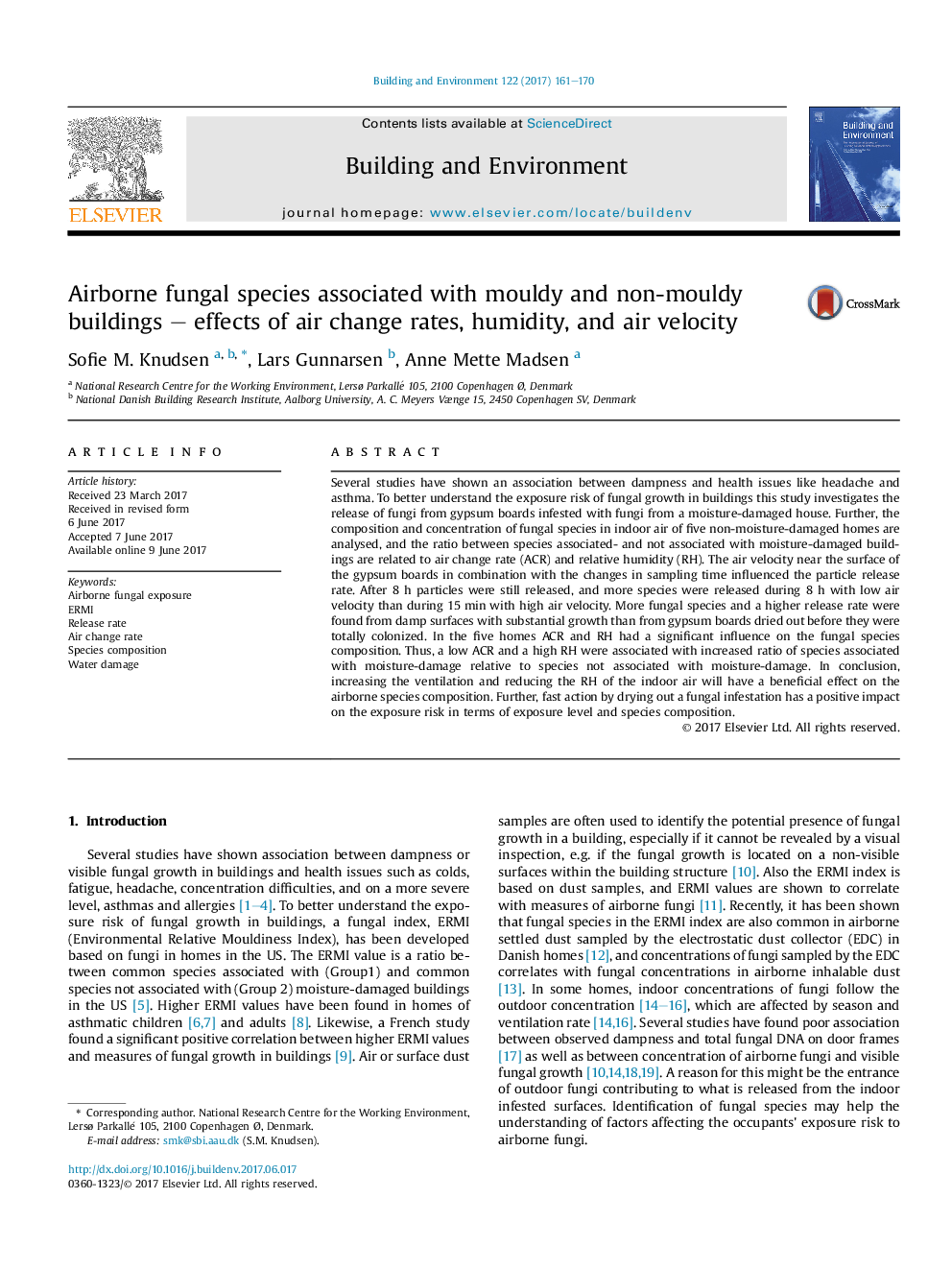| کد مقاله | کد نشریه | سال انتشار | مقاله انگلیسی | نسخه تمام متن |
|---|---|---|---|---|
| 4911456 | 1428370 | 2017 | 10 صفحه PDF | دانلود رایگان |
عنوان انگلیسی مقاله ISI
Airborne fungal species associated with mouldy and non-mouldy buildings - effects of air change rates, humidity, and air velocity
دانلود مقاله + سفارش ترجمه
دانلود مقاله ISI انگلیسی
رایگان برای ایرانیان
کلمات کلیدی
موضوعات مرتبط
مهندسی و علوم پایه
مهندسی انرژی
انرژی های تجدید پذیر، توسعه پایدار و محیط زیست
پیش نمایش صفحه اول مقاله

چکیده انگلیسی
Several studies have shown an association between dampness and health issues like headache and asthma. To better understand the exposure risk of fungal growth in buildings this study investigates the release of fungi from gypsum boards infested with fungi from a moisture-damaged house. Further, the composition and concentration of fungal species in indoor air of five non-moisture-damaged homes are analysed, and the ratio between species associated- and not associated with moisture-damaged buildings are related to air change rate (ACR) and relative humidity (RH). The air velocity near the surface of the gypsum boards in combination with the changes in sampling time influenced the particle release rate. After 8Â h particles were still released, and more species were released during 8Â h with low air velocity than during 15Â min with high air velocity. More fungal species and a higher release rate were found from damp surfaces with substantial growth than from gypsum boards dried out before they were totally colonized. In the five homes ACR and RH had a significant influence on the fungal species composition. Thus, a low ACR and a high RH were associated with increased ratio of species associated with moisture-damage relative to species not associated with moisture-damage. In conclusion, increasing the ventilation and reducing the RH of the indoor air will have a beneficial effect on the airborne species composition. Further, fast action by drying out a fungal infestation has a positive impact on the exposure risk in terms of exposure level and species composition.
ناشر
Database: Elsevier - ScienceDirect (ساینس دایرکت)
Journal: Building and Environment - Volume 122, September 2017, Pages 161-170
Journal: Building and Environment - Volume 122, September 2017, Pages 161-170
نویسندگان
Sofie M. Knudsen, Lars Gunnarsen, Anne Mette Madsen,